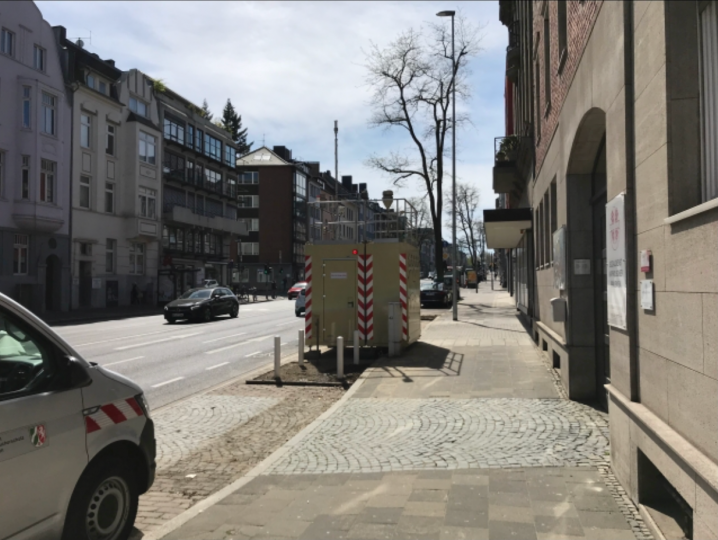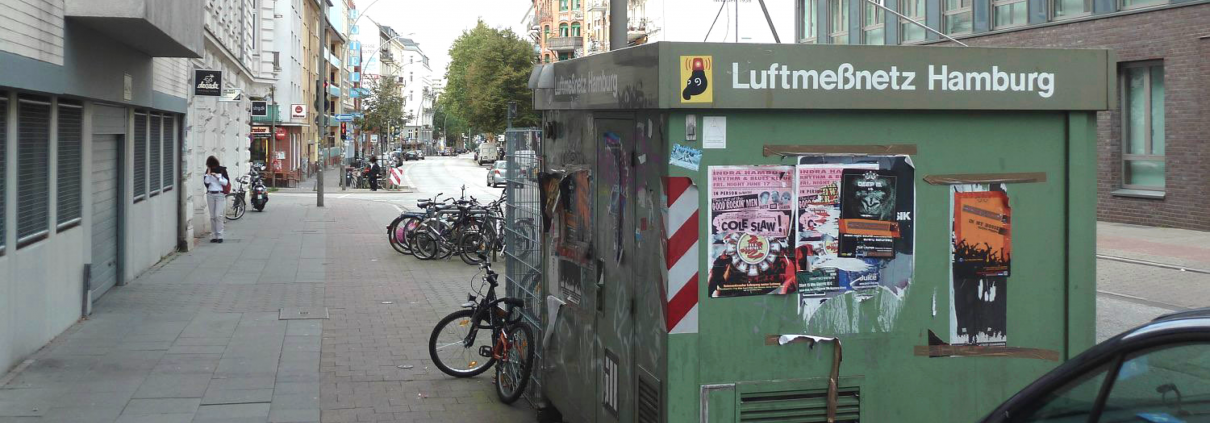Different types of urban air quality monitoring locations
The 2008/50/EC Directive’s sampling point requirement introduces and examines the main question of when air pollutants should be measured. The Directive further examines different types of urban air quality monitoring locations: where should these monitoring stations be located and what is the requirement of the monitoring locations? Read on more to learn about the different monitoring stations.
What kind of monitoring stations exist?
Monitoring stations provide valuable information to standardize reliable and representative results of air pollutants in the vicinity. This monitoring is done by measuring the concentration of pollutants and can be managed by fixed measurements or modeling on the basis of limited measurements. These measurements take into account various external factors such as wind and temperature that change the air pollution concentration.
Monitoring stations should cover the “breathing zone” of people on the ground, specifically they should be positioned at a height of some 1.5 to 2 m. With the air inlet of a monitoring station, the position is further shifted to be located 3 to 4 m above the ground. The following monitoring stations are described by the 2008/50/EC Directive:
- Urban traffic sites – located in densely built-up areas and heavily trafficked roads. Urban traffic sites cover the pollution hotspot within a city with certain criterias that are applied to ensure representativeness of measurement results.

- Urban background sites – sites that monitor the general exposure of the urban population to air pollutants.

- Regional background sites – sites that monitor the general exposure of the rural population and are representative of large rural areas.

Source: State Department for Nature, Environment and Consumer Protection North Rhine-Westphalia, Germany
What are the requirements of the monitoring locations?
For most of the pollutants, monitoring stations have to fulfill the criterion of reporting more than 75% of valid data of all available data in a year to be included for assessment. In addition, monitoring locations must abide to the macro- and micro-siting criteria of sampling points and locations as stated by the 2008/50/EC Directive:
Macroscale siting criteria
Macroscale siting criteria define the general position of monitoring stations within a zone. Specifically, macroscale measurements ensure representativeness for the average exposure of human population, natural ecosystems, and vegetation. The macroscale siting of sample points must fulfill the following criteria:
- Provide data within zones and agglomerations that are representative of the general population and the highest concentrations of pollutants occuring
- Air is sampled representative of air quality for a street segment no less than 100 m length at traffic-oriented sites and at least 250 x 250 m at industrial sites
- Urban background location sites should be located where pollution level is influenced by the integrated contribution from all sources upwind of the station
- In terms of protection of vegetation and natural ecosystems, sample points should be sited 20 km away from agglomerations and representative of air quality in a surrounding area of at least 1,000 km2
The compliance with the macroscale siting criteria for monitoring sites are based on data from documentation provided by monitoring network operators, photographs, and satellite images.
Microscale siting criteria
Microscale siting criteria address the immediate vicinity of the monitoring station. These criteria provide basic requirements to ensure that a monitoring station is representative for the area is addressed as follows:
- Flow of inlet sampling probe should be unrestricted and between 1.5 to 4 m above the ground in height
- For all pollutants, traffic-oriented sampling probes shall be at least 25 m from the edge of major junctions and no more than 10 m from curbside
- Other specifications of siting criterias are:
- 100 meters for hot-spot areas
- Several kilometers for urban areas in case of background stations
- 100 kilometers for remote rural areas
These measurements for the microscale siting criteria of monitoring locations are set in order to avoid the impact of recirculation of the sampler’s outlet, nearby obstacles like buildings or trees, and very local sources that could directly intake emissions mixed with ambient air.
What can you learn from these monitoring locations?
Through the selection of monitoring site locations, it is possible to conduct studies in order to compare and describe general strategy that was followed by different countries, what part did population exposure monitoring play, and hotspot monitoring play. How the network operators select the specific sites can also be assessed and then further used to better understand measures that can be implicated to reduce exposure and develop an air quality plan.
It is also important to forecast how much pollutants are within the vicinity, because awareness can also be a measure to protect your personal health. One way to raise awareness is to become a sensor host! Becoming an air sensor host brings real-time data to your doorstep, with how bad or how good the air quality is. Join us in helping live in clear air today!



